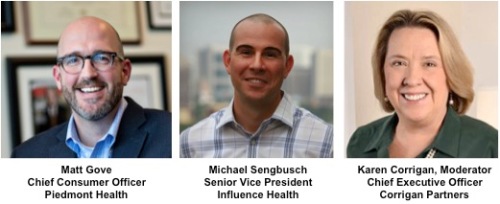 I flew into Phoenix early yesterday to meet with Healthcare Executive Forum (HEF) colleagues. HEF is a self-organized, self-managed group of senior executives that lead strategic planning, business development, brand management and marketing for leading health systems, as well as consultants, experts and thought-leaders in the health industry. Among the members are leaders from Penn Medicine, The Camden Group, Henry Ford Health System, Greystone.Net, Oschner Health System, ND&P, New York-Presbyterian Hospital, Truven Health Analytics, University Hospitals, Healthcare Advisory Board, Partners Healthcare, Studer Group, and many other top notch organizations.
I flew into Phoenix early yesterday to meet with Healthcare Executive Forum (HEF) colleagues. HEF is a self-organized, self-managed group of senior executives that lead strategic planning, business development, brand management and marketing for leading health systems, as well as consultants, experts and thought-leaders in the health industry. Among the members are leaders from Penn Medicine, The Camden Group, Henry Ford Health System, Greystone.Net, Oschner Health System, ND&P, New York-Presbyterian Hospital, Truven Health Analytics, University Hospitals, Healthcare Advisory Board, Partners Healthcare, Studer Group, and many other top notch organizations.
Yesterday’s agenda tackled topics from the latest trends in mergers and acquisitions to population health to brand valuation. Klein & Partners’ Rob Klein shared insights from his annual Omnibus Survey on consumers and healthcare. Today, we’re going to hear about breakthroughs in mobile health, learn how employee engagement played a role in winning the Baldrige Award, and techniques for improving marketing effectiveness.
We’ve been meeting an average of twice a year for nearly twenty-five years to monitor national trends and developments in the health industry, and to share insights, experiences and case studies. Most of our original members are still active, and new recruits have been invited along the way as people inevitably retire or move on to opportunities outside of healthcare.
Often, our sessions are held in conjunction with industry conferences such as the Greystone.Net Healthcare Internet Conference or, as is the case this week, with the Forum for Healthcare Strategists Marketing Strategies Summit. And we also seek opportunities to visit leading organizations and locations where we can interact with companies and leaders forging new paths in healthcare. Over the decades I’ve been involved, that has included Mayo Clinic, Chicago’s Northwestern Memorial Hospital, and the National Health Service in the U.K.
The rich content and discussions that occur at each meeting, along with the intimate forum of our gatherings, produce a supportive, learning environment. And the trust and mutual respect among the members cannot be understated. We are each unto each other mentors, teachers, students, colleagues and, most of all, friends.
I’m already looking forward to our Fall session.
 Is online reputation management is a top priority for your health system? Join me tomorrow, December 14, 2016 at 12 pm CST, to learn how healthcare marketers are leveraging online feedback to strengthen brands and improve patient experience.
Is online reputation management is a top priority for your health system? Join me tomorrow, December 14, 2016 at 12 pm CST, to learn how healthcare marketers are leveraging online feedback to strengthen brands and improve patient experience.


















